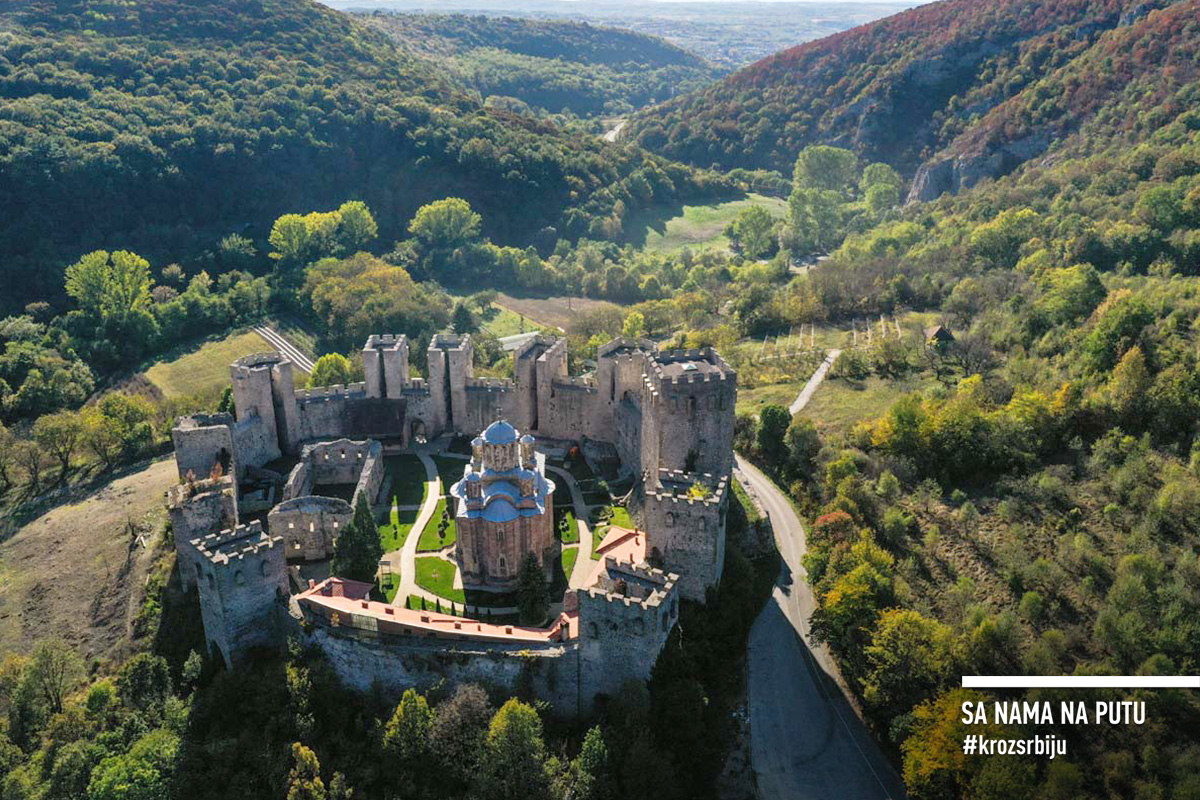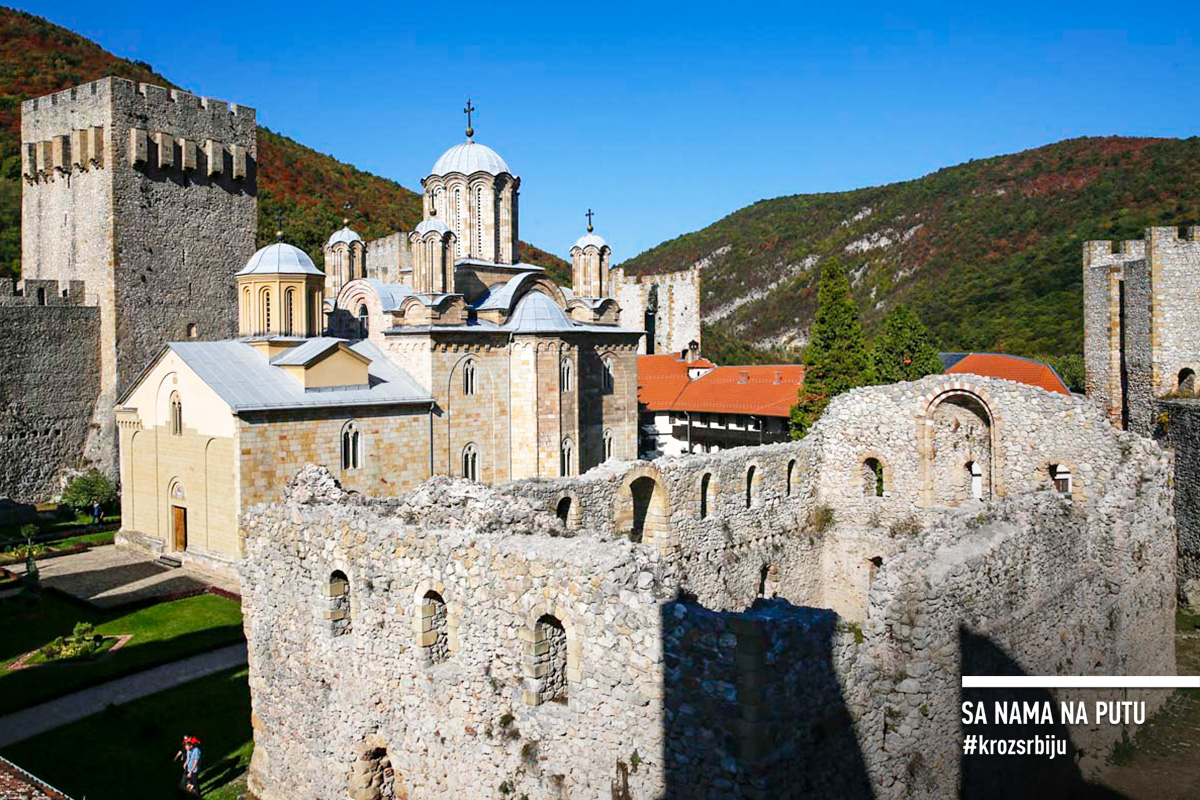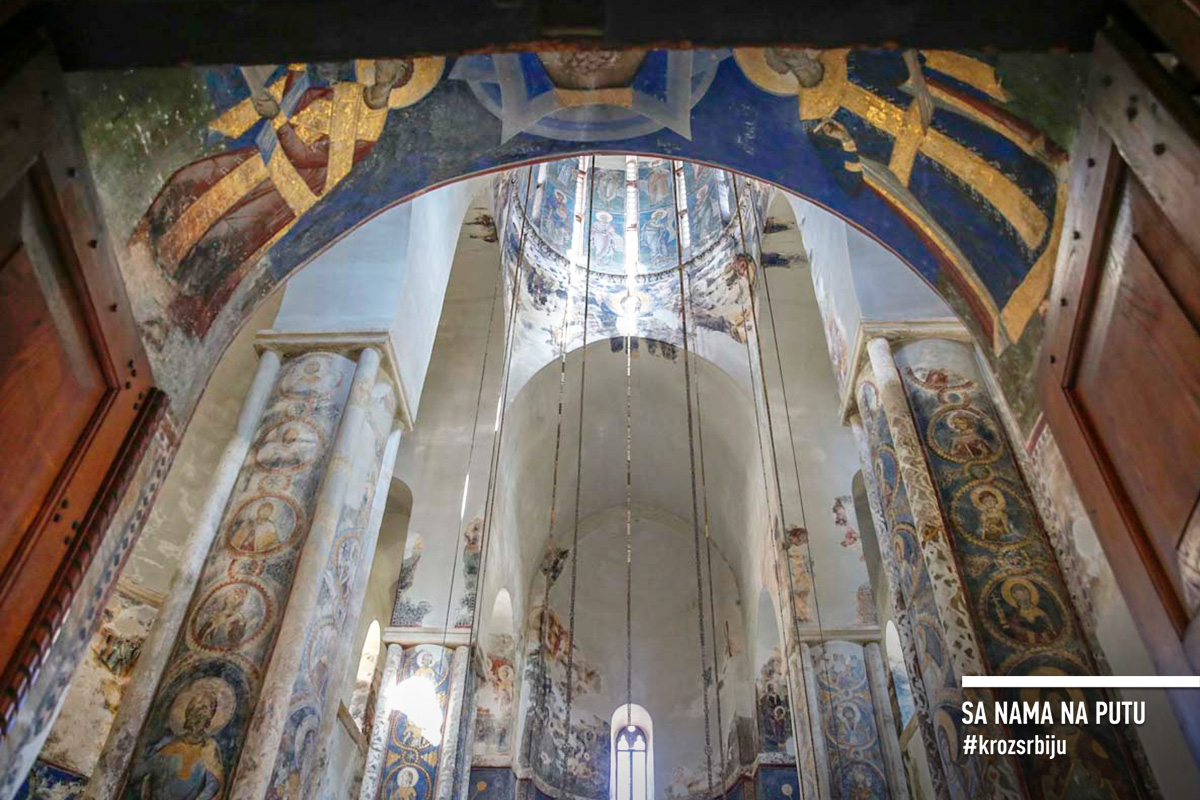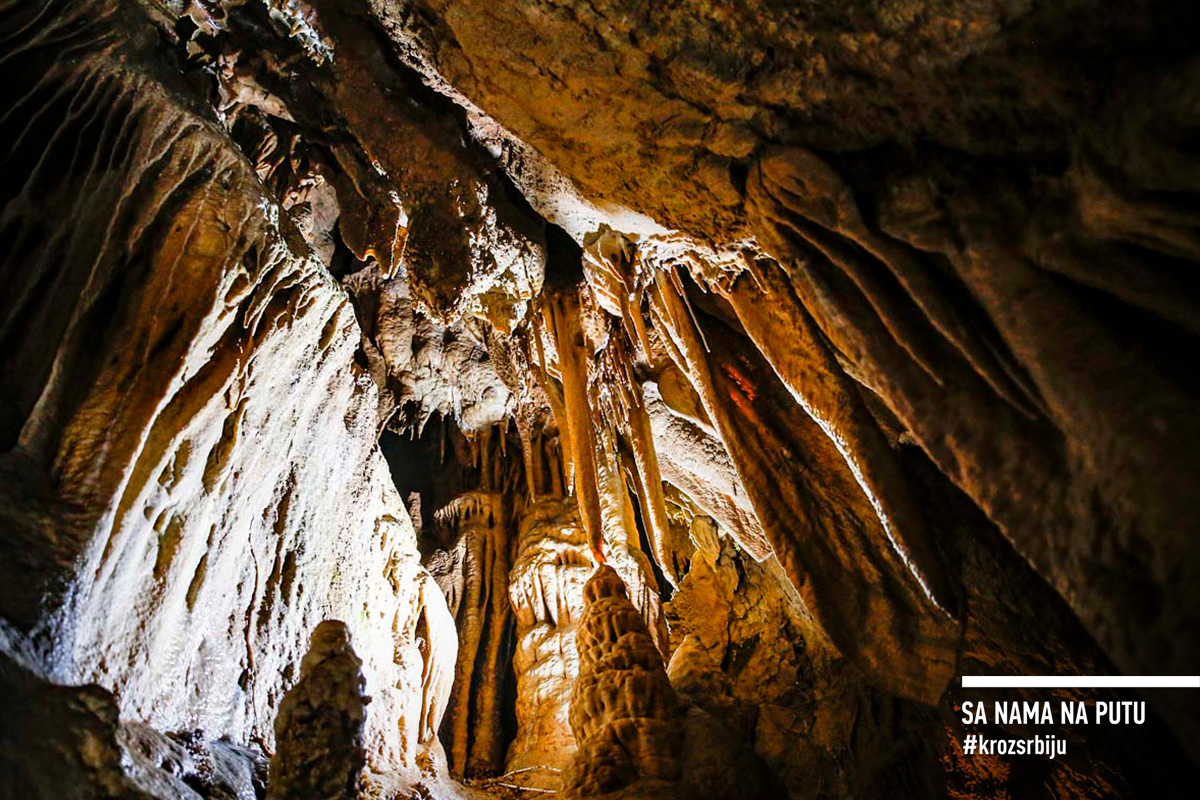Another pearl of Serbian culture, only 140 kilometers away from Belgrade. An ideal place to enjoy silence, beauty and art. See also the impressions from the famous Resava Cave, the cave richest in jewels in this part of Europe!

Indescribable peace in the walls of Manasija
“Impressive, really! When I entered and passed the walls, I could not even imagine that there was a church within. I do not know much about the history of Serbia, but I believe that this is something important for you. I visited only a few similar monasteries, but this one left the strongest impression on me”, said a tourist from Korea, who came with his friend to visit the Manasija monastery, the endowment of the “Father of Belgrade “, Prince Stefan Lazarevic, built in the 15th century.
The peace you feel when you enter this space is indescribable. The monastery is open every day until 6 pm, and the nuns, already accustomed to visitors, do not allow themselves to be hindered in performing daily errands. Kind, but at a distance, they keep the space behind the tall towers in perfect condition.
This Serbian “Temple of culture”, where the famous Resava school was founded, was the home of despot (“despot” was the title equivalent to prince) Stefan Lazarevic, one of the most important rulers in the rich history of Serbia and the “father of Belgrade”, a man who declared Belgrade his capital city.
Centre of Serbian medieval culture
Although there are no precise data, certain evidence has been preserved about the monastery, its creator, the torments and damages it had suffered for years, decades, centuries.
The very sight of the fortification, and then of the monastery, is breath-taking and always raises the question: “Who did all this at those times and how?”. Surrounded by large ramparts and towers, of which there are a total of 11, the monastery was built at the beginning of the 15th century (it is believed from 1407 to 1418), and immediately after its establishing, it became the cultural centre of the despotate. A proof that it was the epicentre of Serbian medieval culture is also shown by the fact that Stefan founded there the Resava writing school, which was famous for its translations and transcripts, even after the fall of the Despotate. All books were manually transcribed and translated. It is believed that monks translated and transcribed books in their cells or in the treasury.
Not only did he found the Resava school, but he was also a great patron of culture and a writer, whose most famous work is “Slovo Ljubve” (The Word of Love).
Undoubtedly, Stefan Lazarević was a man ahead of his time. After his father – prince Lazar – had died in the Battle of Kosovo in 1389, at the age of only 12, he was enthroned as a ruler and together with his mother, Milica Hrebeljanović, he ruled the despotate.

He was considered one of the best knights and military leaders, and his works make him one of the greatest Serbian writers in the Middle ages. After the battle of Angora in 1402, he received the title of “despot” from the Byzantine emperor, and two years later he entered into a vassal relationship with the Hungarian king Sigismund, from whom he received Mačva, Golubac and Belgrade, which he declared his capital in 1405. The despot was married to Jelena, with whom he had no children. After his sudden death in 1427, Jelena entered a monastic and it is not known which monastery she was in.
The masterpiece of architecture and art
The monastery and the fortress are the masterpiece of architecture and art. Everything really looks impressive, as our friend from Korea noticed.
The monastery is surrounded on the outside by large ramparts and towers, there are a total of 11 of them, and the most famous is the castel Keep (donjon) tower, or the Despot’s tower, which exceeds a height of 30 meters. The towers, of course, served as a defence against attacks, but not only that. Below the Despot’s tower, there was natural groundwater and it was protected so that the Turks could not poison it. In the lower part of the tower, there was a granary with about 20 tons of grain, and the entire crew, soldiers, monks and others could fit in there. They had provisions to last for a year.
It is believed that about 300 people lived there at that time, because there were so many places in the dining room, built with two floors; and the ground floor served as a pantry for groceries. The monastery is one of the most important monuments of Serbian medieval culture and belongs to the so-called “Moravian school”. It is the architectural style in which the base of the church is in the shape of a cross. The church is dedicated to the Holy Trinity, and consists of two parts – the narthex and the nave.
A film could be made about what the monastery had suffered!
The Turks plundered and burned it several times, and the narthex was destroyed by an explosion of gunpowder during the rule of the Austrians in the 18th century. In that explosion, the entire vault structure had collapsed. The floor from the 15th century, built of marble, breccia and red limestone, is partially preserved.
At their time, Turks removed even the lead roof and for more than a century the church roof leaked and many frescoes were destroyed, only one third has been preserved. The facts on how the Turks treated this religious building is also evidenced by the fact that they used the church as a barn, where they kept horses …
…or the fact that they removed gold from its frescoes and walls.

Of course, religious fanaticism had existed as well. In order to turn the local population away from Christianity, the Turks scratched the faces and eyes on the frescoes. However, there is also a belief that when they wanted to destroy the image of the Holy Archangel Michael, he then appeared before them, which frightened them and they would not dare to continue destroying his image.
Indeed, one of the preserved characters in the frescoes is his!
Although only one third of the original frescoes have been preserved, there is much to see in the church. One of the most famous is the founder’s composition on which the despot Stefan Lazarević is painted, holding a cross in one hand, and two angels on the side bring him a sword and a spear, as a symbol of chivalry and courage. And Jesus Christ puts a crown on his head and crowns him. In his left hand, the despot holds a model of the temple that he presents to the Holy Trinity.
Another interesting thing is that only in Manasija you will be able to see 12 holy warriors who suffered martyrdom at the time when Christianity was banned, and all of them were shown in motion, which is a unique case.
Resava cave
Once you are in that area, it would be a shame not to visit the Resava cave, which is located about 20 kilometers from Despotovac, at the location known as Babina glava.

Igor Ristić, one of the guides, told us how the cave was discovered and what it hides. Unlike the Postojna Cave in Slovenia, whose symbol is the Human Fish, the Resava cave does not have “its own” peculiarity of such species, but it has something else.
Thanks to Dr. Jovan Petrovic, who was the first to explore this cave, today we can admire the richness of this cave, whose age is estimated at 80 million years, and which is very rich in jewellery, they say that none in the region is richer than this.
Along the 800-meter-long path (the cave is 4.5 kilometers long, but 800 meters open to tourists), you pass through various halls – Coral Channel, Boban Hall, Kepin Hall, Crystal Hall, and the central place is occupied by the Concert Hall and the symbol of this cave – Mother with child.
The ticket costs 350 RS dinars, for children it is 300 dinars, and there can be a maximum of 50 people in one group with a guide. According to the guide Igor Ristić, tourists from all over the world come to the cave, and the majority of foreign visitors are from Russia and Arab countries….
Our Serbia is beautiful, rich in historical heritage and dazzling nature, which seems to tell us that we have something to keep, that we have something to enjoy in truly, and something to be proud of.
So travel with us and after us, visit Serbia and its treasures. And in two weeks we will take you on a new adventure.





